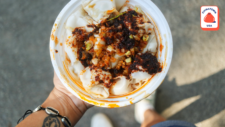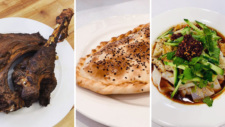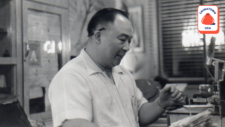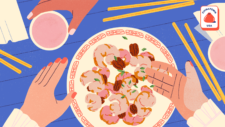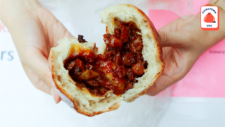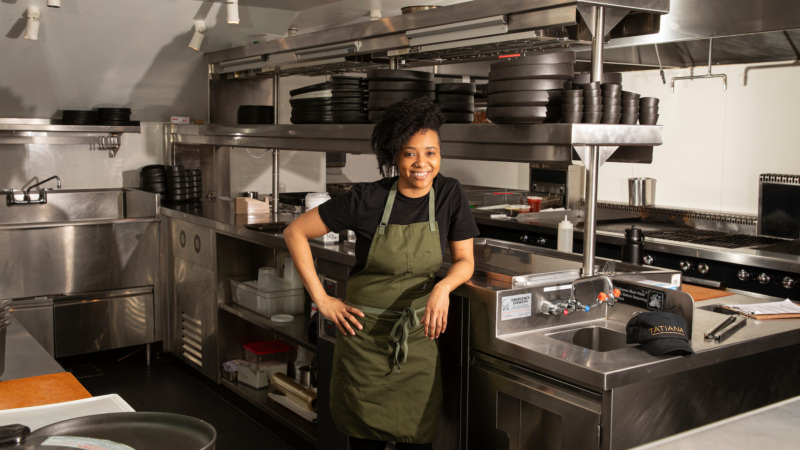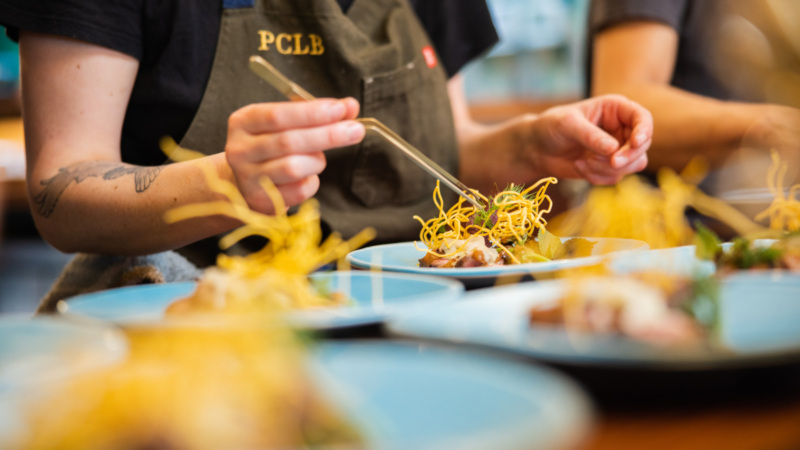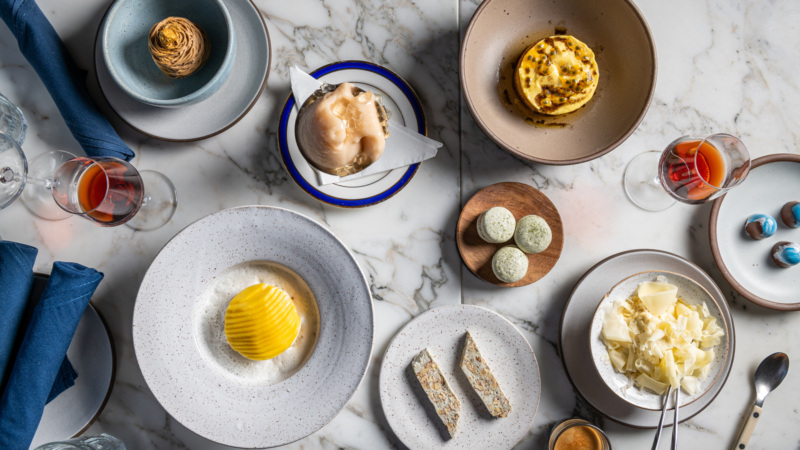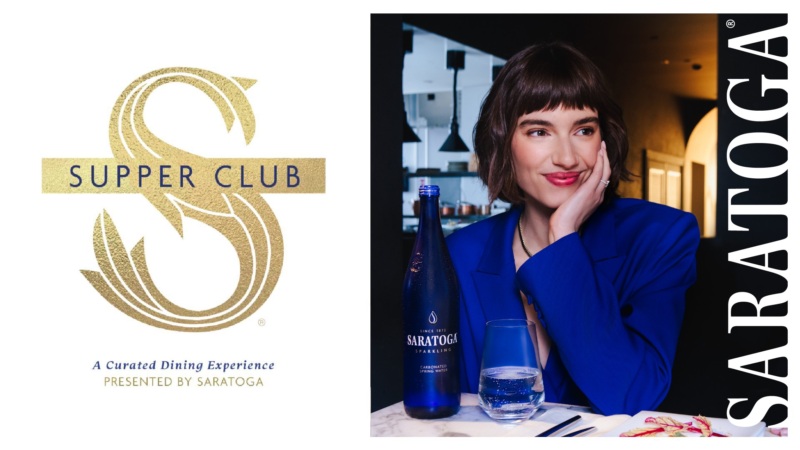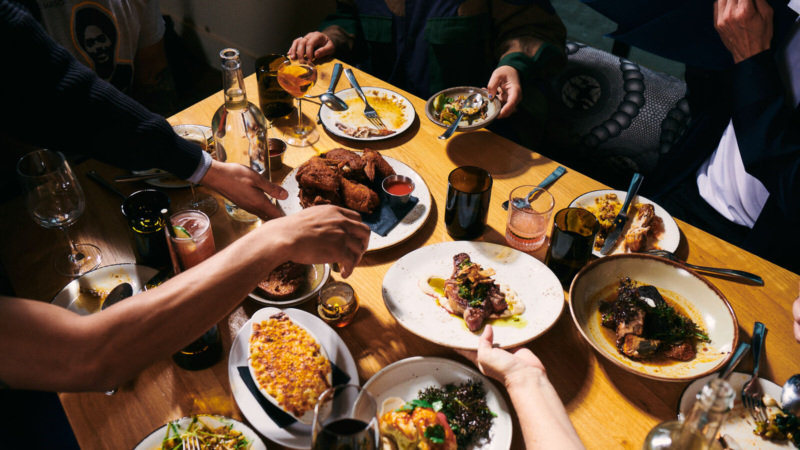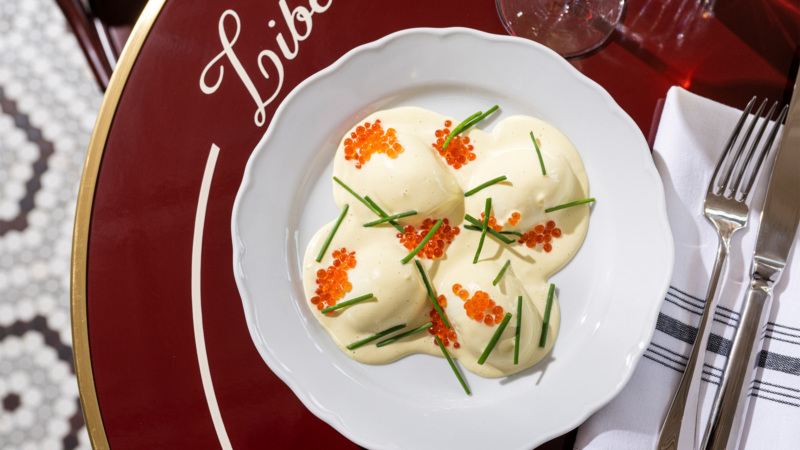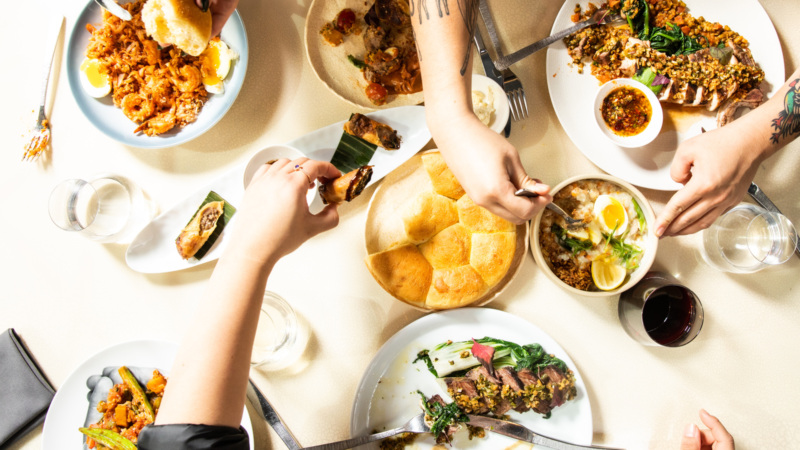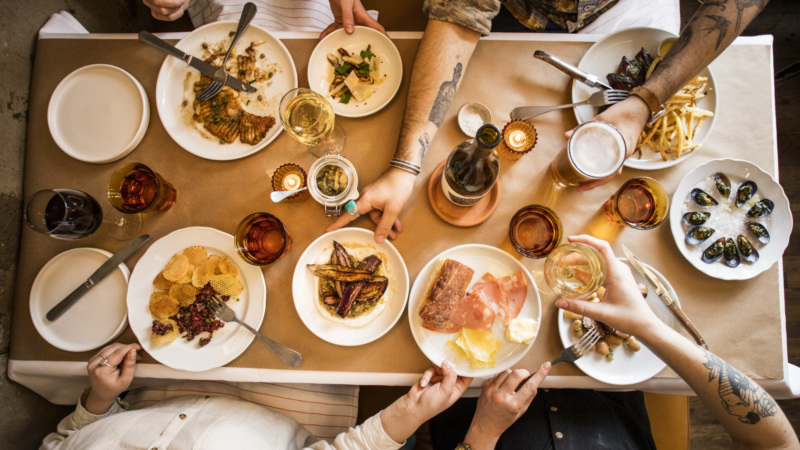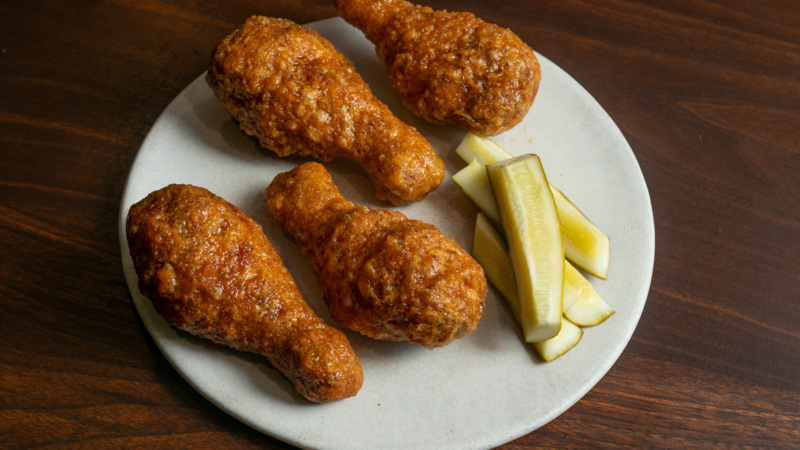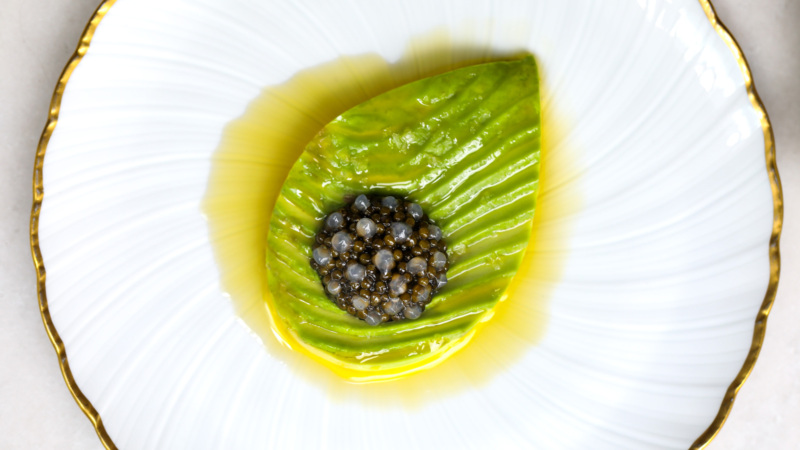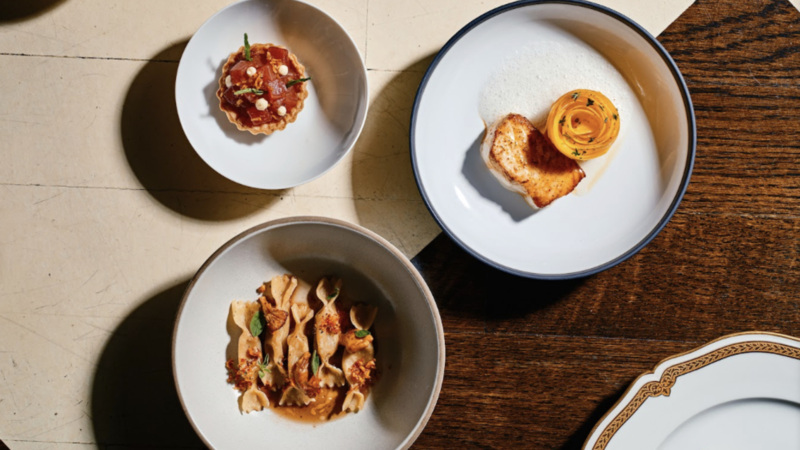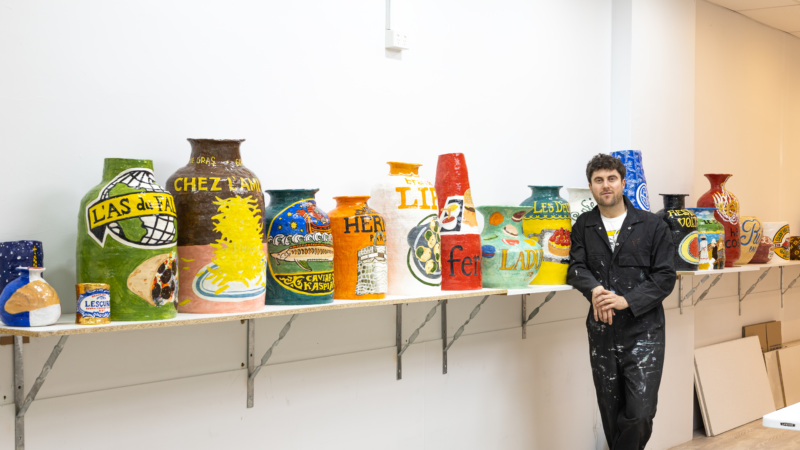

Pork Buns Have Become an American Favorite. Why Can’t We Acknowledge They’re Taiwanese?
The first time I had Momofuku’s pork buns, I was hungover. Noodle soup long being my hangover cure, I decided to finally check out Momofuku Noodle Bar, then in its second year. Looking over the menu, I spied the pork buns and, recalling there seemed to be some chatter around them, I tacked it onto our order. I expected a twist on something distinctively Japanese, it being a ramen shop. So when the server put the plate down in front of me, and I saw the hoisin-doused pork belly enveloped in pillowy white bread, I was confused. This, I thought, is a gua bao.
Now, if you ask New Yorkers about pork buns, they might argue about which does it better, Ippudo or Momofuku. Less frequently, they might bring up the versions at the recently departed Baohaus. Ask folks outside of New York, and they might recall the endless examples that have cropped up across the country, mostly in trendy Asian-minded restaurants. Given the now-legendary origin story of Momofuku’s pork buns genesis — related by David Chang himself in his cookbook, Momofuku — and the fact that his iconic version is arguably the one that kicked off the pork bun craze, some might believe Chang invented the dish.
It also wouldn’t be surprising if others mistook pork buns to be a traditional Japanese side to ramen, considering how many ramen places now offer them on their menu. (In Britain, they’re popularly known as “hirata buns,” named after the executive chef of Ippudo, Masashi Hirata.) Perhaps they think pork buns are Korean in origin, which they might if they’d been to Boka, in New York, and had bulgogi buns.
And yet if you ask what a gua bao is — an iconic Taiwanese snack made with a clamshell bun and filled with pork belly — more often than not you’re likely to be met with a blank stare.
As a Taiwanese American, I’m frustrated to see the popularity of the pork bun decoupled from knowledge of the gua bao. Unlike Cantonese charsiu bao — what I think of when people say “pork buns” — or Shanghainese soup dumplings, gua bao seem to be little known to the American public, and hard to find, at least in its traditional form. At a moment when the American culinary landscape is increasingly including food traditions from outside the West, when diners are willing to try everything from Sichuan dry hot pot to Korean fine dining or Filipino kamayan, how is it that the pork bun’s Taiwaneseness is overlooked? It feels like a metaphor for the ways Taiwan and its culture exist — or not — in the American consciousness: misunderstood, if not downright ignored.
▪️
I spent my childhood weekends in Flushing, N.Y., home at the time to a large population of Taiwanese immigrants, including my grandparents. Every Saturday, after three hours of morning Chinese school, my parents would take me and my brother to eat lunch before whisking us off to piano lessons. One of our regular stops was a restaurant that served classic Taiwanese street fare such as stinky tofu, oyster omelets, and oyster vermicelli. And of course, my favorite, gua bao.
A traditional gua bao — sometimes oddly in the West called the “Taiwanese hamburger,” perhaps someone’s attempt to find a Western equivalency — is made of five components: red-braised pork belly, pickled mustard greens, peanut powder, cilantro leaves, all sandwiched in those signature white clamshell buns, sometimes called lotus leaf buns. A beloved snack, in Taiwan you’re more likely to find gua bao sold from carts at night markets than at sit-down establishments. A good gua bao is juicy, brimming with a diversity of flavors and textures: The bun is soft yet not soggy; the fatty meat melts in your mouth and the lean meat is never fibrous; the varied acidity, salinity, and sweetness of the peanut and pickles brighten and balance the rich braise; and I’m told (because I always ask for my gua bao sans cilantro) the cilantro adds a freshness that brings everything together.
To my young self, each bite of gua bao was so decadent and delicious that it felt almost like I shouldn’t be allowed to have it — and in fact, if I recall, we always ordered only one, and cut it up into small portions to share. Although we ate my mother’s Chinese and Taiwanese food most nights of the week, gua bao was one thing she never made at home. I always thought it was because she felt pork belly was too unhealthy (she made another Taiwanese dish traditionally made with fatty pork, lu rou fan, with lean meat) and would take too long to braise properly, but when I asked her recently, she cited other reasons: because the steamed buns she could find were a tad too big in size and because peanut powder, which every Taiwanese person would argue is essential to a good gua bao, was hard to find in Chinese grocery stores.
As an American kid of Taiwanese, Shanghainese, and Ningbo descent, the hand-me-downs of my cultures mixed in my life and weren’t differentiated. We ate Shanghainese wontons some weekends and lu rou fan others. I grew up believing Taiwanese words like “bala” for guava were Mandarin because they were sprinkled in with my parents’ Mandarin conversation. But I knew gua bao was Taiwanese, the same way I knew oyster vermicelli was Taiwanese — because I had it at a restaurant that was clearly Taiwanese. It was one way I understood this slice of my culture, one way to give that part of my identity some edges.
▪️
In interviews, Chang, who is Korean American, has always been candid about his ignorance of gua bao when he created his pork buns. Its origin, as he’s recounted numerous times, came about because he had leftover pork belly from his ramen that he needed to incorporate elsewhere. Inspired by a Chinese restaurant that served its Peking duck in steamed clamshell buns, Chang decided to substitute duck for roast pork belly; the likeness to gua bao was purely accidental.
This explanation has not gone without criticism, including from Eddie Huang, the Taiwanese American founder of Baohaus, which opened in 2009 as one of the first “modern” Taiwanese restaurants in New York. In his memoir Fresh Off the Boat, Huang blasted Chang’s pork buns as a “bastardized version of gua bao,” and described Baohaus as a response to his anger. Its menu was almost entirely made up of different riffs on gua bao. For a long time, Huang’s was the only high-visibility restaurant to explicitly make the connection between the gua bao and the pork bun. (Baohaus had its own issues. The signature “Chairman Bao” was close to a canonical gua bao, yet the name was problematic: Chairman Mao was the founder of China’s Communist Party, which, despite never having ruled Taiwan, maintains the independently-governed nation belongs under their jurisdiction. On the West Coast, The Chairman took this further, describing a “Great Culinary Leap Forward,” a reference to a devastating Maoist campaign.)
It was Huang who prompted as close to a mea culpa as Chang has delivered on the subject, including during a recent conversation on Chang’s podcast, when Chang admitted that at the time of the pork bun’s creation, he had never been to Taiwan and that if he’d known of the gua bao, he might not have have created the dish as it exists, that he might instead have done a more “respectful” tribute.
Fair enough. Chang didn’t set out to borrow something from Taiwanese cuisine — he was a chef playing around, using materials he had at hand, and drawing inspiration from his experiences to create something that he thought was new. That he stumbled across something so similar to an iconic Taiwanese dish rooted in Taiwanese culture is a coincidence. Who can fault him?
And yet, would a white chef who got rich from spicy fermented cabbage he accidentally “invented” be let off the hook if he didn’t acknowledge he’d basically made kimchi?
▪️
In a way, the story of Chang’s pork bun isn’t so dissimilar from the story of the gua bao itself.
Taiwan is a small island that has seen several large waves of migration and occupation throughout its history. A sense of adaptation and innovation, of food transformed by migration patterns is inherent in its cuisine, in everything from beef noodle soup (brought from Sichuan) to soup dumplings (originally Shanghainese). Gua bao has its origins in Fujian province, where many of Taiwan’s early immigrants hailed from. The original Hokkien version, from southern Fujian, called kong bak pau, is more straightforward than gua bao, consisting of only braised pork belly and lettuce in the lotus bun; it remains popular in Singapore and Malaysia, two countries to which large numbers of Fujianese also migrated. It’s unclear where the Taiwanese addition of pickled greens, peanut powder, and cilantro come from — though one should note that peanut powder and cilantro are a favorite combination in many Taiwanese street foods — whether it was some enterprising Fujianese immigrant’s invention, or if someone had seen these combination of flavors replicated elsewhere and decided to try it. But it’s this innovation that transforms it from a Hokkien snack to a Taiwanese one.
There are those who reach back even further with the gua bao’s history, hypothesizing that the kong bak pau is an adapted form of the roujia mo, a popular sandwich originally hailing from Shaanxi and eaten all over China today. It involves a baked flatbread filled with chopped, braised meat, often pork but sometimes beef or lamb, depending on the region. But it’s difficult to confirm a direct line between the two — as with Chang’s pork bun, it’s possible that two different groups of people simply had a similar idea. Still others might point to gua bao being a transformation of a more traditional baozi — the round, white, steamed kind with meat filling that legend says was an invention of Zhuge Liang, famed strategist from China’s Three Kingdoms period.
Today, in Taiwan, gua bao are mostly eaten as a quick snack or a meal-on-the-go. They’re also traditionally consumed at company banquets held for employees towards the end of the Lunar New Year, the common explanation being that the overstuffed buns look like overflowing purses, symbolizing good fortune for the coming year. Another explanation is that the gua bao’s other name — hu yao zhu, which means “tiger bites pig” because the bun looks like a tiger mouth biting a piece of pork — is a homophone for “holding onto good fortune” in Hokkien. Whatever the origin story, it’s impossible to deny gua bao are quintessentially Taiwanese.
▪️
My unease with the ubiquity of pork buns — or rather, the widespread ignorance of how they’re essentially gua bao — is wrapped up in how Americans tend to handle “new takes” on trendy foods, as with tacos or poke. I’m not categorically against innovating with these foods, if done with respect. But at least it’s apparent to a wide swath of Americans which cultures poke or tacos come from.
And whether or not you think kimchi or gochujang on everything, as it is now, is appropriately respectful to Korean traditions, they enjoy enough space in American consciousness that you couldn’t introduce them as your own invented thing. Pork buns, though, have become a free for all — indistinctly Asian, but otherwise devoid of any roots, any history — other than the origin story Chang has told.
Meanwhile, few contemporary restaurants in America serve proper traditional gua bao (though immigrant-owned Taiwanese restaurants have been serving them up for decades), meaning that much of the public may not have even heard of them, or if they have, might not even know they’re Taiwanese. In fact, Taiwanese food in general has long been absent in American consciousness, despite the fact that Taiwanese immigrants — and their food — have been in America for at least half a century, ahead of the more recent wave of mainland Chinese immigrants. (My own grandmother moved to Flushing from Taiwan in the early 1960s.) This matches a broader misunderstanding of Taiwan by the American public — I still encounter many people who mistakenly believe China’s Communist government is in control of the island or, worse, confuse it with Thailand.
Some responsibility lies with American food media. Food writers have long shined a light on lesser-known foods. But coverage of pork buns almost never seem to get beyond the Chang creation story — rare is the article that acknowledges their similarity to gua bao. (Considering that few restaurants draw that line explicitly, perhaps that’s to be expected.) Even as food coverage has finally embraced the richness and diversity of Chinese regional cuisine, for some reason, Taiwanese cuisine, aside from bubble tea, has been left out. (I wonder if the small recent uptick in contemporary Taiwanese restaurants like Win Son and Ho Foods would change that; so far, from what I can tell, it hasn’t.)
This is why Chang’s Taiwan-less origin story, one repeated over and over by food writers, remains troubling. Food is often the first exposure people get to other cultures, and to maintain an American ignorance about gua bao, despite the popularity of pork buns is, for me, a lost opportunity. The American love for them could be an introduction to a country with a rich culture and complex history, one whose existence is often threatened, whose diaspora makes up a sizable population in America today. If you want to talk about the perfection of the pork bun, give gua bao and Taiwanese food its due.
So when a pork bun is set in front of me at one of those sorts of restaurants, I always see a remixed gua bao — my Taiwanese American identity almost affirmed. I just wish non-Taiwanese diners could see that lineage, too. I wish that the flourishing love of pork buns, Momofuku’s or others, might drive them to try a traditional gua bao. And from there, an understanding — maybe even love — of Taiwan and its culture might begin.
Karissa Chen is a writer who splits her time between Taipei and New York. She has published pieces in The Atlantic, Eater, Longreads, Catapult and more. She is editor in chief at Hyphen magazine, and is currently at work on a novel. Follow her on Twitter and Instagram. Follow Resy, too.

